BCS 111 Unit 5.2
1/18
There's no tags or description
Looks like no tags are added yet.
Name | Mastery | Learn | Test | Matching | Spaced |
|---|
No study sessions yet.
19 Terms
Divided attention
Recognition performance in 3 conditions
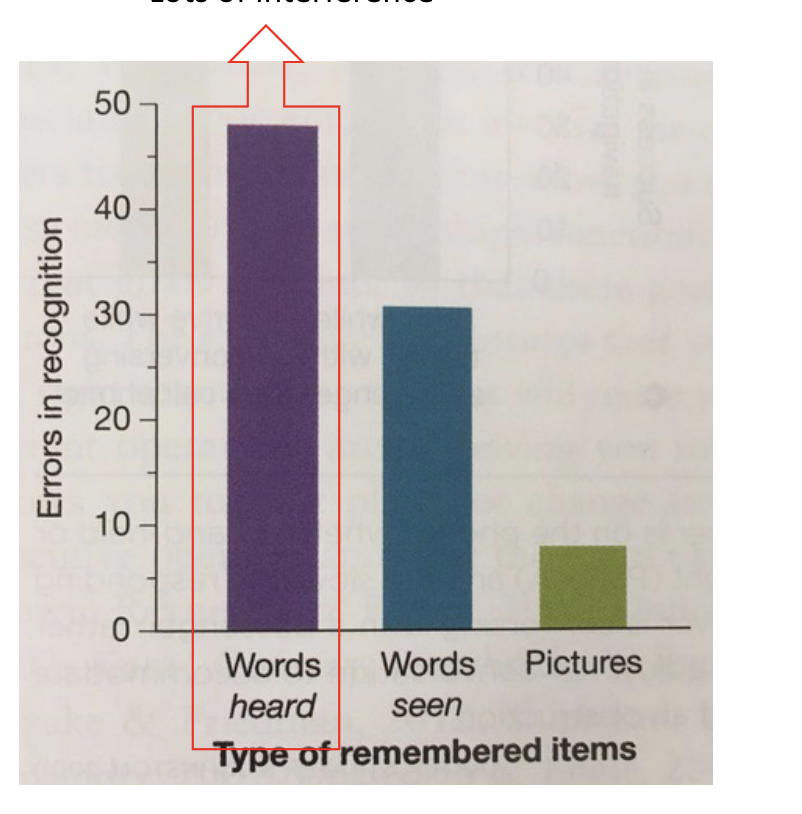
Executive control of resource allocation is crucial in controlling attention
When multitasking: If Task A is shadowing, and Task B is changing oil
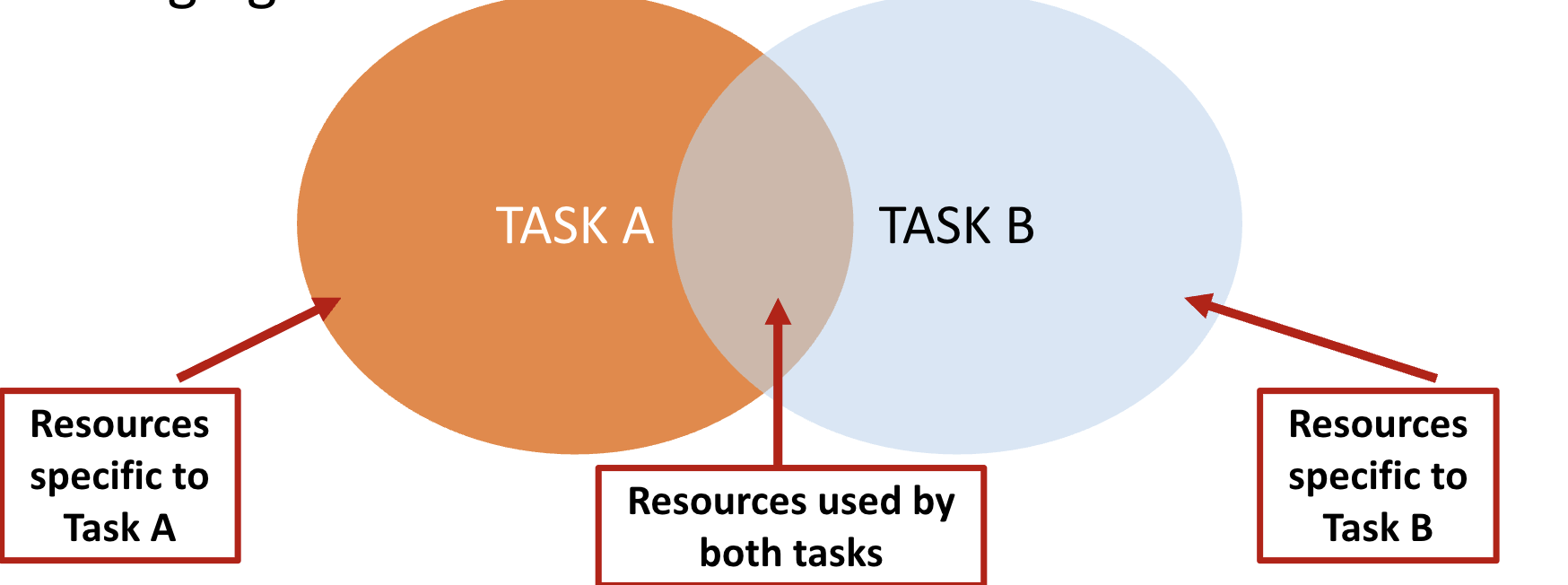
Automatic processing
Can you notice the black dot right away while reading the tongue twister below at the same time? Will finding it (within a time limit) affect how fast you can read the tongue twister?
What is exactly “automatic processing”
Posner and Snyder (1975)
Three criteria
Processing occurs without intention
Unaware of the process of noticing the target
Not interfering with other mental activity
Requires very little mental effort to process
Controlled processing
Can you find the lightest blue dot right away while reading the tongue twister below at the same time? Will finding it (within a time limit) affect how fast you can read the tongue twister?
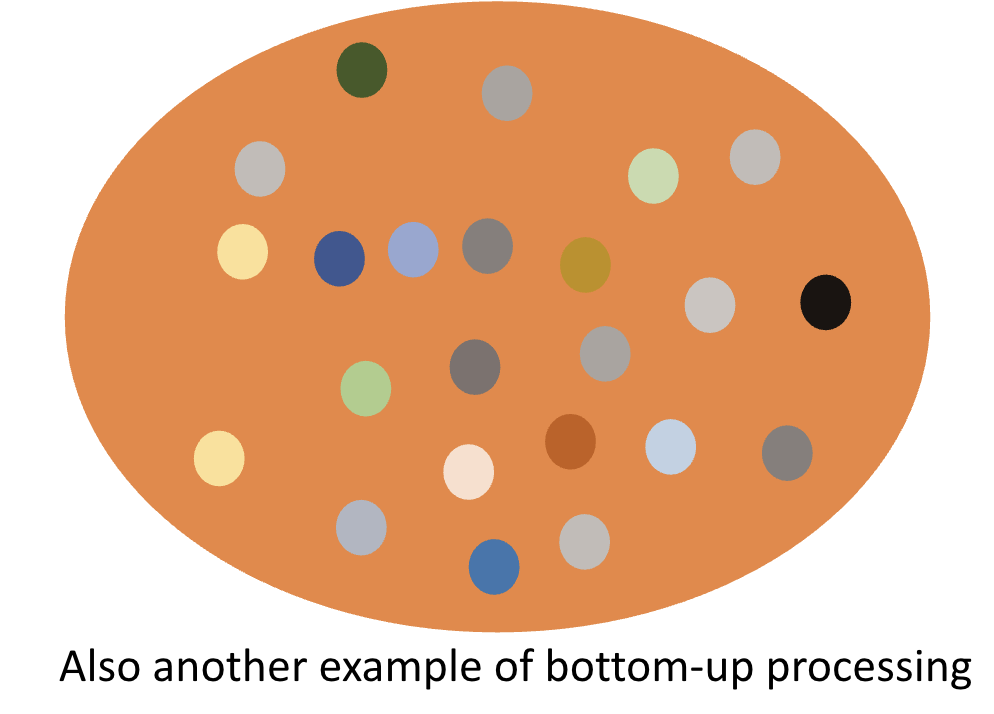
Automatic processing
notice something with little mental effort
Controlled processing
actively shift your attention from one thing to another à requiring a lot more mental efforts than automatic
How do we test automatic vs. controlled processing experimentally? - Visual search task
Automatic processing takes place when the target is quite distinct from the rest of the items
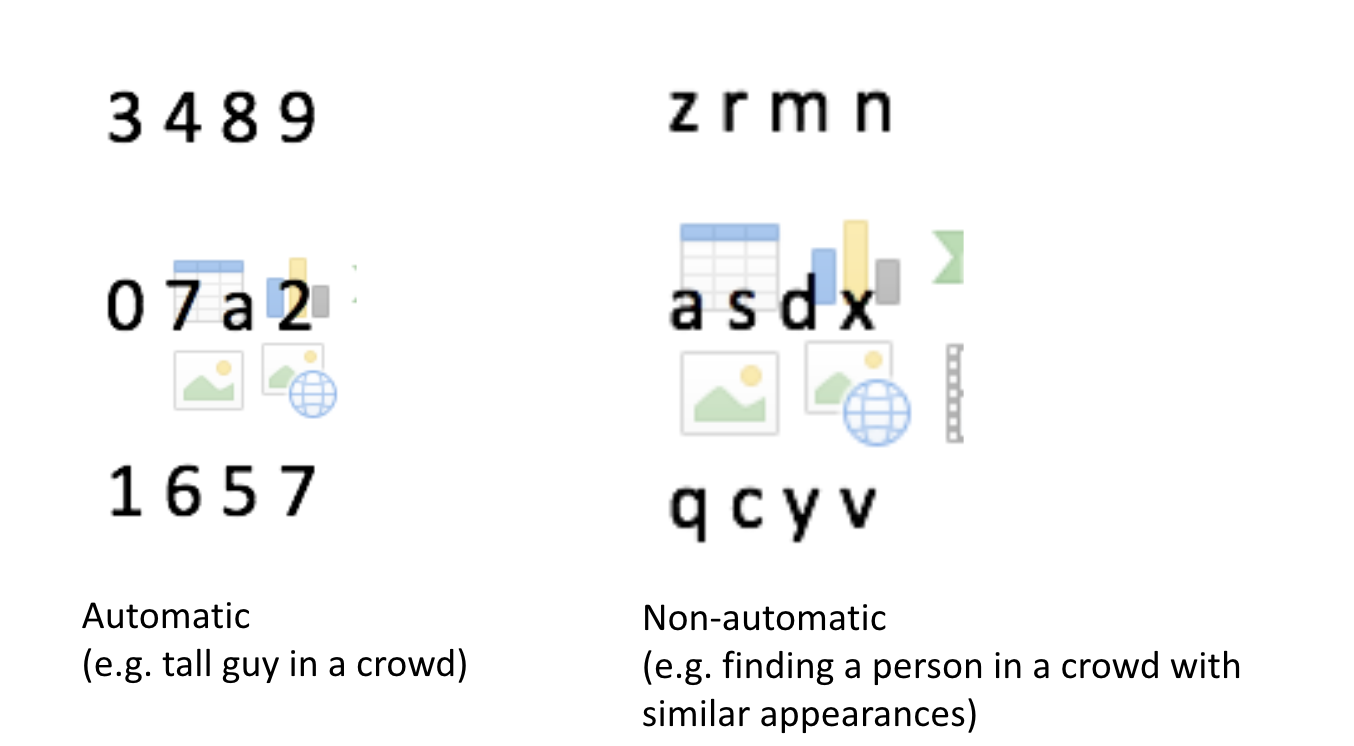
How to test “automatic processing”?
-
Consistent mapping condition:
Target and distractors are different types of stimuli
Target in the current display won’t appear anywhere in the next display
Automatic processing (finding the one that stands out)
Varied mapping condition
Target and distractors are the same type of items (i.e. letters).
Target in the current display CAN still appear as a distractor in the next display
Controlled processing (shift your attention from “G” to “B” in Trial 2 in this example)
Four independent variables
Varied vs. consistent mapping
Frame size: quantity of letters/numbers in each display
Frame time (duration):20–800ms
Memory set size: Number of possible targets
Schneider & Shiffrin (1977)
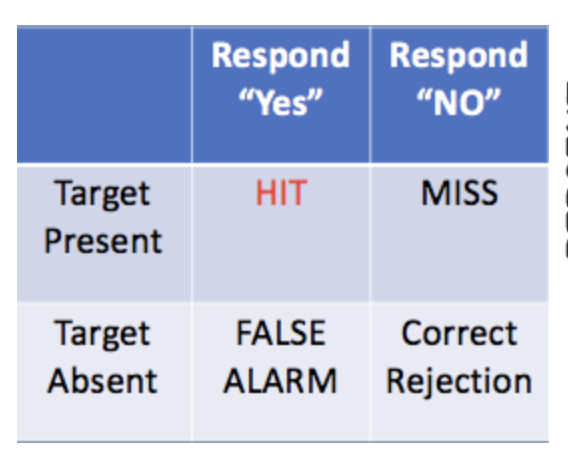
Summary of Schneider and Shiffrin (1977)
Consistent mapping (easy): only frame time matters
Automatic processing
Varied mapping (hard): frame time, frame size, memory set size (number of targets)
Controlled processes
Need to allocate limited resources
More about controlled processing
Attention shift task
Switch between two features of a stimulus
Control what you need to attend to at the moment
Measure “cost of switch/shift”
Neural underpinnings of attention
-
Controlled process
From the external stimuli to internal state
The role of primary somatosensory cortex in attentional control: evidence from fMRI
Zimmermann et al (2012)
Finger sequences
Training: Either think about the action of moving your fingers (internal focus “IN”) OR focus on the physical button presses (external focus “EX”)
Testing/scanning: same task but:
IN-trained group asked to focus EX
EX-trained group asked to focus IN
S1 activated in both types of attention switch; PMC also activated when switched to EX condition
IN-trained → EX
Left premotor cortex (PMC)
EX-trained → IN
Left primary somatosensory (S1)
What happens if there’s damage to the right parietal lobe?
Hemineglact: unaware of the objects in the visual field contralateral to the lesion site
“Reduced awareness of stimuli on one side of space, even though there may be no sensory loss”